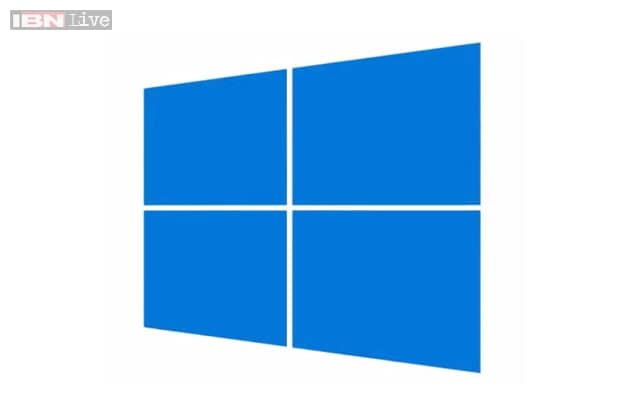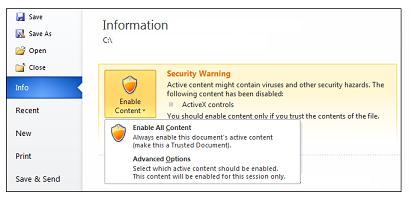Disable Activex In Microsoft Edgewillbrown
Security Advisory
Hi Team, I am using ActiveX control in my application for digital CMS token signing in the IE browser. As per latest update on Microsoft Edge browser, ActiveX control will be nolonger supported in further releases from Microsoft team. To change ActiveX settings. In Internet Explorer, select the Tools button, and then select Internet options. On the Security tab, select Custom level, and then under ActiveX controls and plug-ins, do one the following: Allow Automatic prompting for ActiveX controls by selecting Enable.

Update Rollup for ActiveX Kill Bits
Published: May 08, 2012

Version: 1.0
General Information
Executive Summary
Microsoft is releasing a new set of ActiveX kill bits with this advisory.
This update sets the kill bits for the following third-party software:
Run Activex On Microsoft Edge
- Cisco Clientless VPN solution. The following Class Identifier relates to a request by Cisco to set a kill bit for an ActiveX control that is vulnerable. For more information regarding security issues in the Cisco Clientless VPN solution ActiveX control, please see the Cisco Security Advisory, Cisco ASA 5500 Series Adaptive Security Appliance Clientless VPN ActiveX Control Remote Code Execution Vulnerability. The class identifier (CLSID) for this ActiveX control is as listed in the Third-Party Kill Bits section of this advisory.
Advisory Details
Issue References
For more information about this issue, see the following references:
| References | Identification |
|---|---|
| Microsoft Knowledge Base Article | 2695962 |
Related Software
This advisory discusses the following software.
| Related Software |
|---|
| Windows XP Service Pack 3 |
| Windows XP Professional x64 Edition Service Pack 2 |
| Windows Server 2003 Service Pack 2 |
| Windows Server 2003 x64 Edition Service Pack 2 |
| Windows Server 2003 with SP2 for Itanium-based Systems |
| Windows Vista Service Pack 2 |
| Windows Vista x64 Edition Service Pack 2 |
| Windows Server 2008 for 32-bit Systems Service Pack 2** |
| Windows Server 2008 for x64-based Systems Service Pack 2** |
| Windows Server 2008 for Itanium-based Systems Service Pack 2 |
| Windows 7 for 32-bit Systems and Windows 7 for 32-bit Systems Service Pack 1 |
| Windows 7 for x64-based Systems and Windows 7 for x64-based Systems Service Pack 1 |
| Windows Server 2008 R2 for x64-based Systems and Windows Server 2008 R2 for x64-based Systems Service Pack 1** |
| Windows Server 2008 R2 for Itanium-based Systems and Windows Server 2008 R2 for Itanium-based Systems Service Pack 1 |
**Server Core installation not affected. This advisory does not apply to supported editions of Windows Server 2008 or Windows Server 2008 R2 as indicated, when installed using the Server Core installation option. For more information on this installation option, see the TechNet articles, Managing a Server Core Installation and Servicing a Server Core Installation. Note that the Server Core installation option does not apply to certain editions of Windows Server 2008 and Windows Server 2008 R2; see Compare Server Core Installation Options.
Activex In Microsoft Edge
Frequently Asked Questions
Does this update replace the Cumulative Security Update of ActiveX Kill Bits (2618451)?
No, for the purpose of automatic updating, this update does not replace the Cumulative Security Update of ActiveX Kill Bits (2618451) that is described in Microsoft Security Bulletin MS11-090. Automatic updating may still offer the MS11-090 update to customers regardless of whether or not they installed this update (2695962). However, customers who install this update (2695962) do not need to install the MS11-090 update to be protected with all the kill bits set in MS11-090.
What kill bits does this Update Rollup of ActiveX Kill Bits contain?
This Update Rollup of ActiveX Kill Bits contains new kill bits and all kill bits previously released in MS08-023, Security Update of ActiveX Kill Bits;MS08-032, Cumulative Security Update of ActiveX Kill Bits; MS09-032, Cumulative Security Update of ActiveX Kill Bits; MS09-055, Cumulative Security Update of ActiveX Kill Bits;MS10-008, Cumulative Security Update of ActiveX Kill Bits; MS10-034, Cumulative Security Update of ActiveX Kill Bits;MS11-027, Cumulative Security Update of ActiveX Kill Bits; MS11-090, Cumulative Security Update of ActiveX Kill Bits; and advisories titled Update Rollup for ActiveX Kill Bits, Microsoft Security Advisory 953839, Microsoft Security Advisory 956391, Microsoft Security Advisory 960715, Microsoft Security Advisory 969898, Microsoft Security Advisory 2562937, and Microsoft Security Advisory 2647518.
Why is Microsoft releasing this Update Rollup for ActiveX Kill Bits with a security advisory when previous kill bit updates were released with a security bulletin?
Microsoft is releasing this Update Rollup for ActiveX Kill Bits with an advisory because the new kill bits do not affect Microsoft software.
What is a kill bit?
A security feature in Microsoft Internet Explorer makes it possible to prevent an ActiveX control from ever being loaded by the Internet Explorer HTML-rendering engine. This is done by making a registry setting and is referred to as setting the kill bit. After the kill bit is set, the control can never be loaded, even when it is fully installed. Setting the kill bit makes sure that even if a vulnerable component is introduced or is re-introduced to a system, it remains inert and harmless.
For more information on kill bits, see Microsoft Knowledge Base Article 240797: How to stop an ActiveX control from running in Internet Explorer.
Why does this update not contain any binary files?
This update only makes changes to the registry to disable the controls from instantiating in Internet Explorer.
Should I install this update if I do not have the affected component installed or use the affected platform?
Yes. Installing this update will block the vulnerable control from running in Internet Explorer.
Does this update contain any kill bits that are not Microsoft-specific?
Yes. Microsoft has been requested by organizations to set the kill bit for controls that the organizations own and have found to be vulnerable. See the subsection, 'Third-Party Kill Bits,' in the Vulnerability Information section. I wanna grow old with you westlife mp3 downloads.
Does this update contain kill bits that were previously released in an Internet Explorer security update?
No, this update does not include kill bits that were previously released in an Internet Explorer security update. We recommend that you install the latest Cumulative Security Update for Internet Explorer.
Why does this advisory not have a security rating associated with it?
This update contains new kill bits for third-party controls. Microsoft does not provide a security rating for vulnerable third-party controls.
Suggested Actions
Review the Microsoft Knowledge Base Article that is associated with this advisory
Microsoft encourages customers to install this update. Customers who are interested in learning more about this update should review Microsoft Knowledge Base Article 2695962.
Workarounds
Prevent COM objects from running in Internet Explorer Brother ppd110 pattern programming device.
You can disable attempts to instantiate COM object in Internet Explorer by setting the kill bit for the control in the registry.
Warning If you use Registry Editor incorrectly, you may cause serious problems that may require you to reinstall your operating system. Microsoft cannot guarantee that you can solve problems that result from using Registry Editor incorrectly. Use Registry Editor at your own risk.
To set the kill bit for a CLSID with value of {B8E73359-3422-4384-8D27-4EA1B4C01232}, paste the following text in a text editor such as Notepad. Then, save the file by using the .reg file name extension.
Windows Registry Editor Version 5.00[HKEY_LOCAL_MACHINESOFTWAREMicrosoftInternet ExplorerActiveX Compatibility{B8E73359-3422-4384-8D27-4EA1B4C01232}]'Compatibility Flags'=dword:00000400[HKEY_LOCAL_MACHINESOFTWAREWow6432NodeMicrosoftInternet ExplorerActiveX Compatibility{B8E73359-3422-4384-8D27-4EA1B4C01232}]'Compatibility Flags'=dword:00000400You can apply this .reg file to individual systems by double-clicking it. You can also apply it across domains by using Group Policy. For more information about Group Policy, see the TechNet article Group Policy collection.
Note You must restart Internet Explorer for your changes to take effect.
Impact of Workaround. There is no impact as long as the object is not intended to be used in Internet Explorer.
How to undo the workaround. Delete the registry keys previously added in implementing this workaround.
Third-Party Kill Bits
This update includes kill bits to prevent the following ActiveX controls from being run in Internet Explorer:
- Cisco Clientless VPN solution. The following Class Identifier relates to a request by Cisco to set a kill bit for an ActiveX control that is vulnerable. For more information regarding security issues in the Cisco Clientless VPN solution ActiveX control, please see the Cisco Security Advisory, Cisco ASA 5500 Series Adaptive Security Appliance Clientless VPN ActiveX Control Remote Code Execution Vulnerability. The class identifier (CLSID) for this ActiveX control is:
- {B8E73359-3422-4384-8D27-4EA1B4C01232}
Other Information
Microsoft Active Protections Program (MAPP)
To improve security protections for customers, Microsoft provides vulnerability information to major security software providers in advance of each monthly security update release. Security software providers can then use this vulnerability information to provide updated protections to customers via their security software or devices, such as antivirus, network-based intrusion detection systems, or host-based intrusion prevention systems. To determine whether active protections are available from security software providers, please visit the active protections websites provided by program partners, listed in Microsoft Active Protections Program (MAPP) Partners.
Feedback
- You can provide feedback by completing the Microsoft Help and Support form, Customer Service Contact Us.
Support
- Customers in the United States and Canada can receive technical support from Security Support. For more information about available support options, see Microsoft Help and Support.
- International customers can receive support from their local Microsoft subsidiaries. For more information about how to contact Microsoft for international support issues, visit International Support.
- Microsoft TechNet Security provides additional information about security in Microsoft products.
Disclaimer
The information provided in this advisory is provided 'as is' without warranty of any kind. Microsoft disclaims all warranties, either express or implied, including the warranties of merchantability and fitness for a particular purpose. In no event shall Microsoft Corporation or its suppliers be liable for any damages whatsoever including direct, indirect, incidental, consequential, loss of business profits or special damages, even if Microsoft Corporation or its suppliers have been advised of the possibility of such damages. Some states do not allow the exclusion or limitation of liability for consequential or incidental damages so the foregoing limitation may not apply.
Revisions
- V1.0 (May 8, 2012): Advisory published.
Built at 2014-04-18T13:49:36Z-07:00
